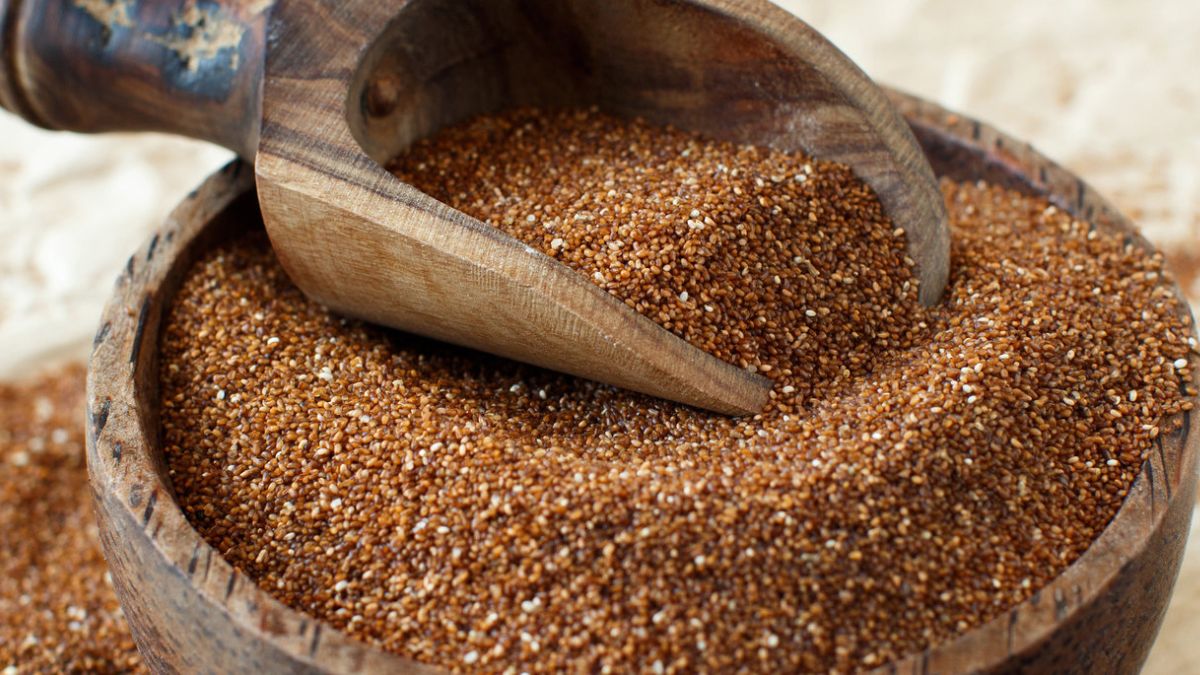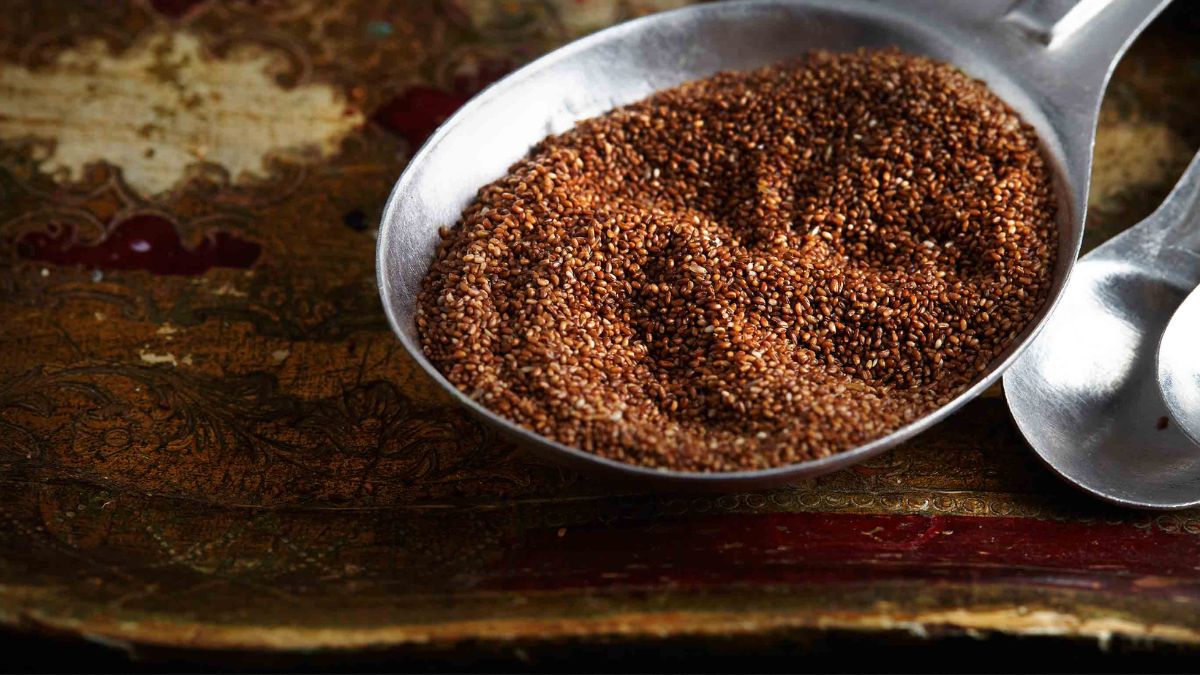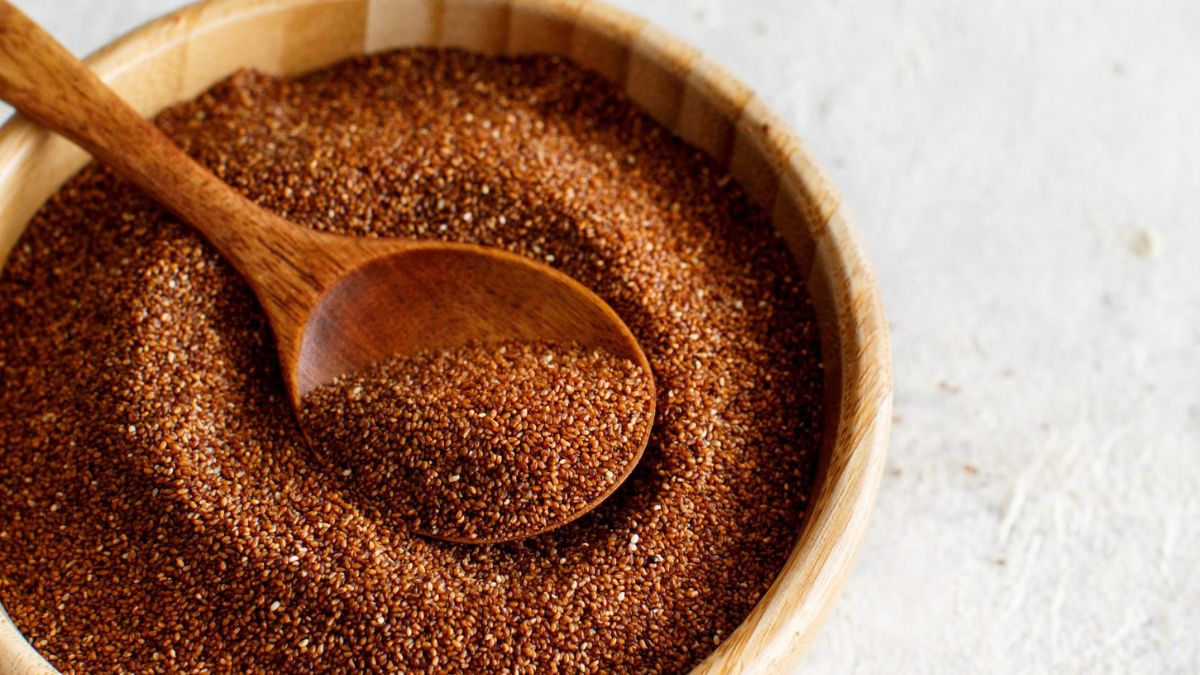Even though a teff seed is very small, it has a lot of nutrients. Many of Ethiopia’s famous long-distance runners say Teff helps them keep going. It has also been a staple food in the Horn of Africa for a long time, where it is most often ground into flour and used to make injera, the region’s traditional flatbread. People worldwide are starting to like Teff because it is one of the so-called “ancient grains” that haven’t been changed by selective breeding or other genetic changes.
Teff is a whole grain, like barley, wheat berries, and quinoa. It comes from the Eragrostis tef plant’s seed, also known as Williams’ lovegrass or annual bunch grass. Unlike wheat, Teff, a type of millet, is a grain that most people with celiac disease or gluten intolerance can eat. Teff is more expensive than other whole grains because it is the smallest grain in the world and hard to harvest. However, people like Teff say its high nutritional value makes up for the extra cost. Like other grains, it can also be bought as flour.
What is Teff?
Teff, or tef, is a cereal grain native to Northeastern Africa and Southwestern Arabia. Although it has been used in Ethiopia for centuries, this grain was not widely known in other parts of the world until the late twentieth century, when farmers in the Central United States and Australia began experimenting with it. Growing demand for alternative grains has made them more readily available, especially in urban areas. Health food stores and large grocers typically stock either flour or whole-grain types of Teff.
The Amharic language is where the word comes from. Teff means “lost” because the grains are so small that if you drop one, you won’t be able to find it. The fine grains grow on the long, thin stems of an annual grass genus Eragrostis. This grass is in the same family as lovegrass. The grains are so small that enough seeds to plant an entire field can fit in the palm of your hand or a small bag. This makes the crop very easy to move around.
Teff is an ancient grain from Ethiopia that is full of fiber, protein, and minerals. Its gluten-free flour is quickly becoming a popular substitute for wheat flour, and it may be more expensive and may not be as easy to find as other gluten-free flour. Still, it’s a great addition to bread and other baked goods, and if you want to try something new, you can make injera.
Varieties
Teff comes in different kinds, which can usually be told apart by the color of the seed. White or ivory Teff is often ground into flour, but you can find whole seeds online. Brown and red teff seeds can be sold alone or mixed with or without white seeds. In general, the different kinds can be used the same way.
How to Cook Teff?
You can simmer Teff just like you would simmer any other whole grain, but the ratio of Teff to liquid will change depending on what you want to do with it. With a 1:1 ratio of Teff to liquid, the seeds stay whole and al dente. This makes them perfect for sprinkling on oatmeal, muffins, soup, steamed vegetables, or anywhere else you want to add a healthy crunch.
To make a dish like breakfast porridge creamier, increase the liquid to 1:4. Use 1 3/4 to 2 cups of water or stock for every cup of dry Teff when using it as the base for pilaf, stuffing, or adding it to a casserole or other dish that will keep cooking.
Once you know how much liquid to use, bring it to a boil, add the Teff, cover the pot, turn the heat down, and let it simmer until all the liquid is absorbed by the grains. Depending on how much liquid you use, this can take anywhere from 8 to 20 minutes. Let the pot sit off the heat for about 5 minutes with the lid on. Then, fluff the rice with a fork, like you would with quinoa or couscous. Some recipes say to first toast it in a dry pan until it gives off a strong smell. About three cups of cooked Teff can be made from a cup of dry whole grain teff.
Bob’s Red Mill suggests baking with its teff flour in place of about 25% of the white flour in a recipe to add nutrition and a unique taste. Teff flour can hold other gluten-free flours together in gluten-free recipes, giving baked goods a soft, almost cake-like crumb.
Where to Buy Teff?
Teff looks a little bit like tiny flax seeds or brown poppy seeds. You can find it with other whole grains (sometimes in the baking aisle or with breakfast grains like oatmeal) in most natural food stores and well-stocked grocery stores, and Teff isn’t likely to be in the bulk bins like other whole grains. You can also order it online from some of the companies that make it or from grocery stores.
In the same way, you can buy teff flour online or at most natural food stores and well-stocked grocery stores. Even though it grows mostly in these African countries, which have fertile fields and use farming methods that are good for the environment, Idaho also grows some of the best Teff in the world. Even though this powerful grain is small, it was the main food source for ancient cultures and great athletes.
Storage Tip
Dry Teff can be kept for up to a year in a cool, dark, dry place where air can’t get in. The best place to store teff flour is in the freezer or refrigerator, where the oils from the seed’s germ don’t oxidize as quickly. Try to use it all up within a few months. If it smells bad, it’s probably gone bad, so throw it away. Cooked Teff can be kept in the fridge for up to five days if it is well sealed. Cooked Teff doesn’t freeze well because its soft texture makes it mushy when it thaws.
How is Teff Flour Used?
Since Teff is so small, it is usually cooked and eaten as a whole grain instead of being separated into germ, bran, and kernel-like wheat. Teff can also be ground up and used as a gluten-free flour made from whole grains. In Ethiopia, a traditional sourdough flatbread called injera is made from teff flour that has been fermented with yeast that lives on the grain’s surface. Most Ethiopian meals start with this soft, spongy bread as the base. Pour a batter made of fermented teff flour onto a hot griddle to make it. Also, teff flour is a great gluten-free substitute for wheat flour that can be used to make bread or packaged foods like pasta. Also, it is often added to wheat-based products to make them healthier.
Add it to your Diet
You can use teff flour instead of wheat flour in pancakes, cookies, cakes, muffins, bread, and gluten-free egg noodles, among other things. Gluten-free recipes only call for the teff flour and other gluten-free ingredients, but if you don’t have to avoid gluten, you can use teff flour along with wheat flour. Remember that gluten-free teff products may not be as chewy as wheat products.
What are the Health Benefits of Teff Flour?
Teff is an ancient grain that has a lot of health benefits. Not only is it naturally gluten-free, making it a great choice for people on a gluten-free diet, but a study of 1,800 celiac patients who regularly ate Teff found that their symptoms improved. In another study, researchers at Manchester Metropolitan University found that the iron levels of female runners who were low on iron went up after eating teff bread for six weeks.
Teff is good for you because it has about 354 calories in a half cup of uncooked Teff. A serving of this size also has almost 13 grams of protein, 70.6 grams of carbohydrates, 7.7 grams of fiber, and only 2.3 grams of fat. Teff contains B vitamins and minerals like calcium, iron, copper, magnesium, phosphorus, manganese, potassium, and zinc.
Here are some of the other lesser-known health benefits associated with this ancient grain:
- Teff has 20% and 40% resistant starches and a low glycemic index (GI) rating. This makes it a great choice for people with diabetes who need blood sugar control.
- Teff has 20% and 40% resistant starches and a low glycemic index (GI) rating. This makes it a great choice for people with diabetes to help control their blood sugar.
- One serving of Teff gives you 10 percent of the daily recommended value for6 zinc. These important value nutrients for a healthy heart, digestive system, muscles, nervous system, and strong immune system.
- Teff is naturally low in sodium, making it a good choice for people with high blood pressure or other things that put them at risk for heart disease.
- A single serving of Teff has 69 percent of the daily recommended value for magnesium. Magnesium is a mineral that your muscles, nervous system, and heart need to work well.
- Teff has the most calcium of any ancient grain. One cup of cooked Teff has 123 mg of calcium, five times as much as whole wheat.
- Teff is a grain with a lot of calcium, and most grains don’t have much calcium, but Teff does. Calcium is good for the immune system and keeping bones and tissues healthy.
Does Teff Cause Gas?
Does Teff Flour have Any Downsides?
Since there isn’t much teff flour being made right now, it costs more than other gluten-free flour. Rice, oat, amaranth, sorghum, corn, millet, and buckwheat flours are among the gluten-free flours that are less expensive. Some restaurants and manufacturers add wheat flour to teff products like bread or pasta to make them cheaper or improve the texture. Because of this, these products are not good for people who don’t eat gluten. If you have celiac disease, ensure that only pure Teff is used, not any products containing gluten. Any teff product you buy should say that it is gluten-free.
Conclusion
Like most grains, Teff has a flavor called “nutty.” The Teff Company, which grows it in Idaho, says that it is similar to hazelnuts and that the darker variety hints at chocolate. The grain has a mild, nutty flavor and packs a serious nutritional punch. Teff has an excellent balance of amino acids and is also high in protein, calcium, and iron. Along with other alternative grains like quinoa and millet, this grain has become well-known in the health foods community because of its great nutritional value.
Teff can be used in several ways. It is the main ingredient in injera, a fermented bread served with most meals in Ethiopia, and it is similar to naan, which is served with most meals in India. It can also be ground into flour to make a great gluten-free alternative, and this flour can make pie crusts, cookies, bread, and other baked goods. Teff can also be cooked whole and eaten as a side dish or main course, and it can be steamed, boiled, or baked.


